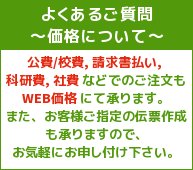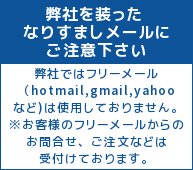Data Assimilation Fundamentals, 1st ed. 2022
◆日本地質学会第132年学術大会セール 開催中!:2025年10月24日(金)ご注文分まで
※上記表示の販売価格は割引適用後の価格です 出版済み 3週間でお届けいたします。 Title: Data Assimilation Fundamentals, 1st ed. 2022 Subtitle: A Unified Formulation of the State and Parameter Estimation Problem Series: Springer Textbooks in Earth Sciences, Geography and Environment Author: Evensen, Geir / Vossepoel, Femke C. / van Leeuwen, Peter Jan Publisher: Springer ISBN: 9783030967086 Cover: HARDCOVER Date: 2022年04月 DESCRIPTION データ同化手法における基本的な定理や、必要とされる仮定・近似について、順を追って説明。さらに従来の教科書とは逆のアプローチによって、その研究にとって最も適した手法がわかるように構成されている。 This open-access textbook's significant contribution is the unified derivation of data-assimilation techniques from a common fundamental and optimal starting point, namely Bayes' theorem. Unique for this book is the "top-down" derivation of the assimilation methods. It starts from Bayes theorem and gradually introduces the assumptions and approximations needed to arrive at today's popular data-assimilation methods. This strategy is the opposite of most textbooks and reviews on data assimilation that typically take a bottom-up approach to derive a particular assimilation method. E.g., the derivation of the Kalman Filter from control theory and the derivation of the ensemble Kalman Filter as a low-rank approximation of the standard Kalman Filter. The bottom-up approach derives the assimilation methods from different mathematical principles, making it difficult to compare them. Thus, it is unclear which assumptions are made to derive an assimilation method and sometimes even which problem it aspires to solve. The book's top-down approach allows categorizing data-assimilation methods based on the approximations used. This approach enables the user to choose the most suitable method for a particular problem or application. Have you ever wondered about the difference between the ensemble 4DVar and the "ensemble randomized likelihood" (EnRML) methods? Do you know the differences between the ensemble smoother and the ensemble-Kalman smoother? Would you like to understand how a particle flow is related to a particle filter? In this book, we will provide clear answers to several such questions. The book provides the basis for an advanced course in data assimilation. It focuses on the unified derivation of the methods and illustrates their properties on multiple examples. It is suitable for graduate students, post-docs, scientists, and practitioners working in data assimilation. Table of contents Introduction Mathematical Formulation Problem Formulation Maximum a Posteriori Solution Strong-Constraint 4DVar Weak Constraint 4DVar Kalman Filters and 3DVar Randomized-Maximum-Likelihood Sampling Low-Rank Ensemble Methods Fully Nonlinear Data Assimilation Localization and Inflation Methods' Summary Examples and Applications A Kalman Filter with the Roessler Model Linear EnKF Update EnKF for an Advection Equation EnKF with the Lorenz Equations 3Dvar and SC-4DVar for the Lorenz 63 Model Representer Method with an Ekman-Flow Model Comparison of Methods on a Scalar Model Particle Filter for Seismic-Cycle Estimation Particle Flow for a Quasi-Geostrophic Model EnRML for History Matching Petroleum Models ESMDA with a SARS-COV-2 Pandemic Model Final Summary TABLE OF CONTENTS Introduction.- Part I Mathematical Formulation: Problem formulation.- Maximum a posteriori solution.- Strong-constraint 4DVar.- Weak constraint 4DVar.- Kalman ?lters and 3DVar.- Randomized-maximum-likelihood sampling.- Low-rank ensemble methods.- Fully nonlinear data assimilation.- Localization and in?ation.- Methods’ summary.- Part II Examples and Applications: A Kalman ?lter with the Roessler model.- Linear EnKF update.- EnKF for an advection equation.- EnKF with the Lorenz equations.- 3Dvar and SC-4DVar for the Lorenz 63 model.- Representer method with an Ekman-?ow model.- Comparison of methods on a scalar model.- Particle ?lter for seismic-cycle estimation.- Particle ?ow for a quasi-geostrophic model.- EnRML for history matching petroleum models.- ESMDA with a SARS-COV-2 pandemic model.- Final summary.- References.- Index.

|
||||||||||||||||||||||||||||||||||||||||||||||||
























